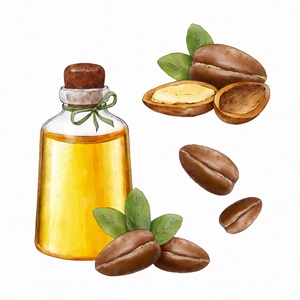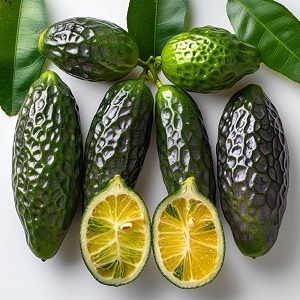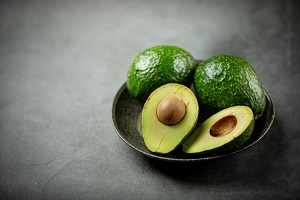Hello, readers! Srima here, and I’m excited to announce that over the next month, I’ll be sharing regular posts featuring an alphabetical list of fruit names. Today, we’re starting with 49 fruits that begin with the letter A. From the familiar apples and apricots to more exotic offerings like abiu and avocado, I’ve tried to include the most popular ones. Each fruit name is accompanied by an image, though a few might be missing.
With this list, you’ll never run out of fruit names when teaching your child about food! Though not all fruits are unique, some are different varieties of other fruits or are known by different names.
So, let’s dive right in and start exploring…
“A quick reminder before trying a new fruit: Some fruits may not be safe to eat. Do proper research before consuming unfamiliar fruits to ensure safety.”
List of Fruits that Begin with A
1. Abiu

2. Açaí Berry

3. Acai Palm

4. Asian Pear

5. Acerola

6. African Baobab Fruit

7. African Cucumber

8. Argan Fruit

9. African Star Apple

10. Aguaymanto

11. Akee

12. Alberta Peach

13. Algerian Clementine

14. Alligator Apple

15. Alligator Plum

16. Almond Fruit

17. Almond Peach

18. Alquequenje (Cape Gooseberry)

19. Alycha (Wild Plum)

20. Amaou Strawberry

21. Amara Melon

22. Amarillo Melon

23. Amazon Grape

24. Ambarella

25. American Beautyberry

26. American Mayapple

27. American Persimmon

28. Amla (Indian Gooseberry)

29. Amra

30. Anchovy Pear

31. Andean Blackberry

32. Andean Tomato

33. Annona (Cherimoya)

34. Ape (Elephant Apple)

35. Apple

36. Appleberry

37. Apricot

38. Aprium

39. Arabian Date Fruit

40. Arazá (Amazon Cherry)

41. Atemoya

42. Ananas (Pineapple)

43. Athena Melon

44. Australian Desert Lime

45. Australian Finger Lime

46. Australian Illawarra Plum

47. Australian Mulberry

48. Avellano (Chilean Hazelnut)

49. Avocado

More Details About Fruits Starting with ‘A’
| No | Fruit Name | Native Region | Taste | Color | Season | Edible | Culinary Uses |
|---|---|---|---|---|---|---|---|
| 1 | Abiu | South America | Sweet, Creamy | Yellow | Summer | Yes | Desserts, Juices |
| 2 | Açaí Berry | Amazon Rainforest | Tart, Earthy | Purple | Year-round | Yes | Smoothies, Bowls |
| 3 | Acai Palm | Amazon Basin | Bitter, Nutty | Purple | Year-round | Yes | Beverages, Ice Cream |
| 4 | Asian Pear | East Asia | Sweet, Juicy | Yellow | Autumn | Yes | Salads, Snacks |
| 5 | Acerola | Central & South America | Tart, Sweet | Red | Spring | Yes | Juices, Syrups |
| 6 | African Baobab Fruit | Africa | Tangy, Citrus | Brown | Dry Season | Yes | Powders, Juices |
| 7 | African Cucumber | Sub-Saharan Africa | Mild, Sweet | Green/Orange | Year-round | Yes | Salads, Snacks |
| 8 | Argan Fruit | Morocco | Bitter | Yellow | Summer | Yes | Oil Extraction |
| 9 | African Star Apple | West Africa | Sweet, Tart | Orange | Dry Season | Yes | Snacks, Desserts |
| 10 | Aguaymanto | Andes Region | Sweet, Tart | Orange | Summer | Yes | Jams, Salads |
| 11 | Akee | West Africa | Nutty | Red | Fall | Yes | Traditional Dishes |
| 12 | Alberta Peach | North America | Sweet | Pink | Summer | Yes | Pies, Jams |
| 13 | Algerian Clementine | North Africa | Sweet, Juicy | Orange | Winter | Yes | Snacks, Juices |
| 14 | Alligator Apple | Central & South America | Mild, Bitter | Green | Year-round | Yes | Traditional Dishes |
| 15 | Alligator Plum | Central America | Sweet, Tangy | Green | Spring | Yes | Desserts |
| 16 | Almond Fruit | Middle East, South Asia | Mild, Nutty | Green | Summer | Yes | Snacks, Baking |
| 17 | Almond Peach | Asia | Sweet, Nutty | Pink | Summer | Yes | Desserts, Salads |
| 18 | Alquequenje (Cape Gooseberry) | South America | Sweet, Tart | Yellow | Summer | Yes | Jams, Salads |
| 19 | Alycha (Wild Plum) | Europe, Asia | Sweet, Sour | Red | Spring | Yes | Preserves, Snacks |
| 20 | Amaou Strawberry | Japan | Sweet, Juicy | Red | Winter | Yes | Desserts, Snacks |
| 21 | Amara Melon | South Asia | Sweet, Fragrant | Green | Summer | Yes | Salads, Desserts |
| 22 | Amarillo Melon | South America | Sweet, Fragrant | Yellow | Summer | Yes | Snacks, Desserts |
| 23 | Amazon Grape | Amazon Basin | Sweet, Juicy | Purple | Year-round | Yes | Juices, Snacks |
| 24 | Ambarella | Southeast Asia | Tart, Crunchy | Green | Summer | Yes | Pickles, Chutneys |
| 25 | American Beautyberry | North America | Mild, Sweet | Purple | Fall | Yes | Jellies, Teas |
| 26 | American Mayapple | Eastern United States | Sweet, Tart | Yellow | Spring | Yes | Preserves |
| 27 | American Persimmon | Eastern United States | Sweet, Rich | Orange | Fall | Yes | Puddings, Baking |
| 28 | Amla (Indian Gooseberry) | India, Southeast Asia | Sour, Tangy | Green | Fall | Yes | Pickles, Juices |
| 29 | Amra | South Asia | Sour, Astringent | Green | Summer | Yes | Pickles, Chutneys |
| 30 | Anchovy Pear | Central America | Sweet, Nutty | Brown | Year-round | Yes | Sauces, Salads |
| 31 | Andean Blackberry | Andes Region | Sweet, Tart | Black | Summer | Yes | Desserts, Juices |
| 32 | Andean Tomato | Andes Region | Sweet, Tangy | Red | Year-round | Yes | Sauces, Salads |
| 33 | Annona (Cherimoya) | Andes, Central America | Sweet, Creamy | Green | Winter | Yes | Desserts, Smoothies |
| 34 | Ape (Elephant Apple) | Southeast Asia | Sour, Tangy | Green | Year-round | Yes | Curries, Chutneys |
| 35 | Apple | Worldwide | Sweet, Crisp | Red/Green | Fall | Yes | Pies, Snacks |
| 36 | Appleberry | Australia | Sweet, Juicy | Purple | Summer | Yes | Snacks, Jams |
| 37 | Apricot | Central Asia | Sweet, Tart | Orange | Summer | Yes | Desserts, Jams |
| 38 | Aprium | United States | Sweet, Hybrid | Orange | Summer | Yes | Snacks, Desserts |
| 39 | Arabian Date Fruit | Middle East | Sweet, Chewy | Brown | Fall | Yes | Snacks, Baking |
| 40 | Arazá (Amazon Cherry) | Amazon Rainforest | Sweet, Tart | Yellow | Summer | Yes | Juices, Jams |
| 41 | Atemoya | Central & South America | Sweet, Creamy | Green | Fall | Yes | Desserts, Smoothies |
| 42 | Ananas (Pineapple) | South America | Sweet, Tart | Yellow | Year-round | Yes | Desserts, Juices |
| 43 | Athena Melon | United States | Sweet, Juicy | Yellow | Summer | Yes | Snacks, Salads |
| 44 | Australian Desert Lime | Australia | Tart, Citrusy | Green | Spring | Yes | Sauces, Syrups |
| 45 | Australian Finger Lime | Australia | Tart, Citrus | Green | Spring | Yes | Garnishes, Drinks |
| 46 | Australian Illawarra Plum | Australia | Tart, Sweet | Purple | Summer | Yes | Sauces, Jams |
| 47 | Australian Mulberry | Australia | Sweet, Tart | Red | Spring | Yes | Desserts, Jams |
| 48 | Avellano (Chilean Hazelnut) | Chile | Sweet, Nutty | Brown | Fall | Yes | Baking, Snacks |
| 49 | Avocado | Central America | Creamy, Mild | Green | Year-round | Yes | Salads, Toasts |
FAQs:
Which fruit starts with the letter A?
Abiu, Apple, Apricot, Avocado & Almond are some of the common fruits that start with A.
What is a fruit with 3 A’s?
The fruit ‘banana’ contains three A’s in its spelling.
What fruit starts with A besides apple?
Abiu, Asian Pear, Akee Apricot, Acerola, Avocado, Argan Fruit, & Almond are some of the common fruits that start with A besides apple.
What is a berry that starts with the letter A?
A berry that starts with the letter “A” is Acai berry.
What makes a fruit a fruit?
A fruit is the mature ovary of a flowering plant that contains seeds, developed after pollination to protect and help disperse those seeds for plant reproduction.
Is avocado a fruit or vegetable?
An avocado is a fruit. Specifically, it’s a berry because it develops from the ovary of a flower and contains a seed.







Leave a Reply